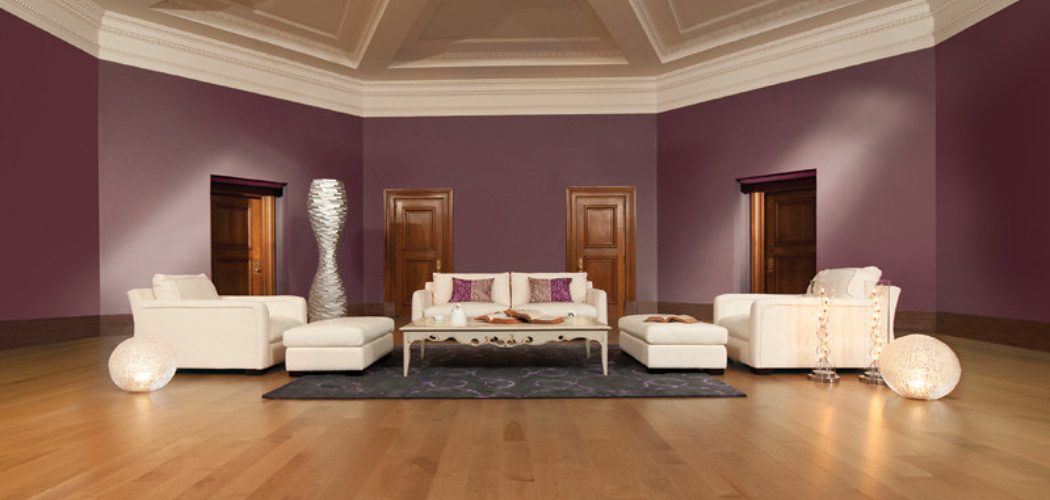Are you in the process of renovating your home? Choosing the right flooring for each room can be a daunting task. Not only do you want to pick a flooring that looks good, but it also needs to suit the function and style of each space.
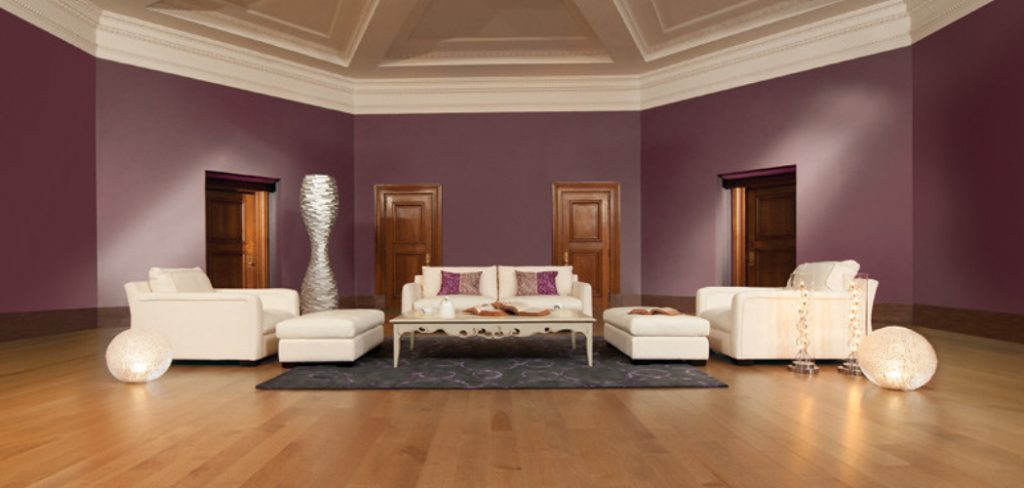
Walking into a home with mismatched flooring can feel jarring – one room featuring plush carpeting, while the next has rustic hardwood or industrial tile. While there are many factors to consider when decorating each space, knowing how to match your flooring throughout different rooms of your home can help create an aesthetic balance that will leave both you and any guests impressed!
In this blog post, we’ll be exploring practical tips on how to match flooring in different rooms. From selecting complementary textures and choosing tones that blend to mastering tricky transitions like stairs and hallways, read on!
What Will You Need
Before we dive into the details, it’s important to know what you’ll need in order to match flooring in different rooms successfully. Here are some essentials:
- Measuring tape
- Samples of flooring options
- A keen eye for design and color coordination
Once you have these basic tools at hand, it’s time to start planning!
10 Easy Steps on How to Match Flooring in Different Rooms
Step 1. Analyze the Layout of Your Home:
Start by understanding the layout and flow of your home. How do the rooms connect? Which areas are visible from one room to another? This information is crucial in determining how to match floorings in different rooms. It’s often best to use the same flooring for adjacent rooms for a smoother visual transition.
Step 2. Consider Functionality:
The function of each room plays a significant part in determining the type of flooring to use. For instance, durable flooring materials such as tile or laminate are better suited for high-traffic areas like the kitchen or hallway. Conversely, warmer options like carpets or area rugs suit bedrooms. Consider the function of the room before deciding on the right flooring type.
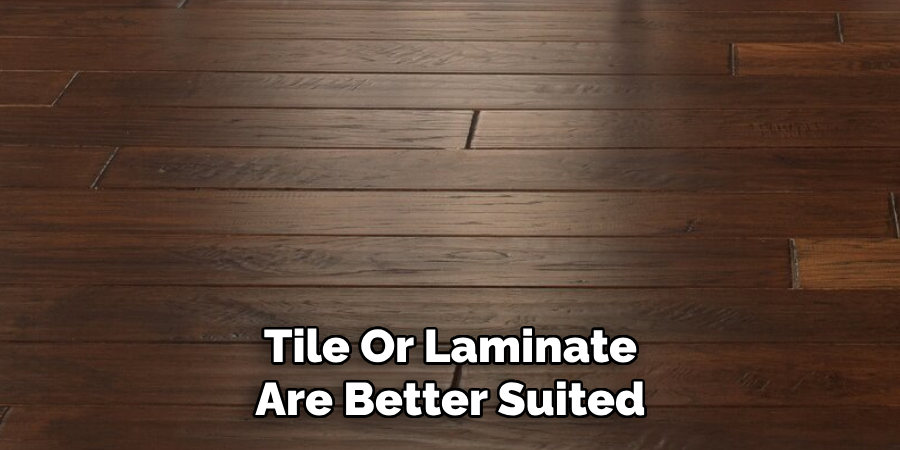
Step 3. Color Coordination:
Colors are instrumental in creating a seamless flow from one room to another. While you don’t need to stick to the same color throughout, ensure that the tones you select complement each other. For instance, you can opt for lighter versions of the same color to create a sense of continuity.
Alternatively, you can use contrasting colors for a more dynamic look. But remember, when opting for the latter, try to maintain balance by not choosing too drastic colors. Consider the overall color scheme of your home, including the walls, furniture, and décor.
Step 4. Factor in Light Exposure:
Consider the amount of natural light each room receives. Light can greatly affect the appearance of your flooring. For instance, rooms with ample natural light can handle darker floors, while rooms with limited light might benefit from lighter-colored flooring to help brighten the space. Checking your flooring samples under different lighting conditions throughout the day can help you make an informed decision.
Step 5. Evaluate the Room Size:
The size of the room can influence the choice of flooring as well. Larger rooms typically allow more freedom to play with different types, colors, or patterns of floors, while smaller rooms might feel cramped with overly bold patterns or dark hues.
Lighter tones and larger plank sizes can make a small room appear more spacious, while darker tones or more intricate patterns can make a larger space feel cozier and more intimate. Always consider the size and spatial dimensions of the room when choosing your flooring.
Step 6. Transitioning Between Different Floorings:
Often, you will need to transition between different types of flooring. This could be due to functionality reasons or for adding visual interest. The key is to make these transitions feel intentional and balanced. Transition strips are an excellent way to connect different flooring types seamlessly.
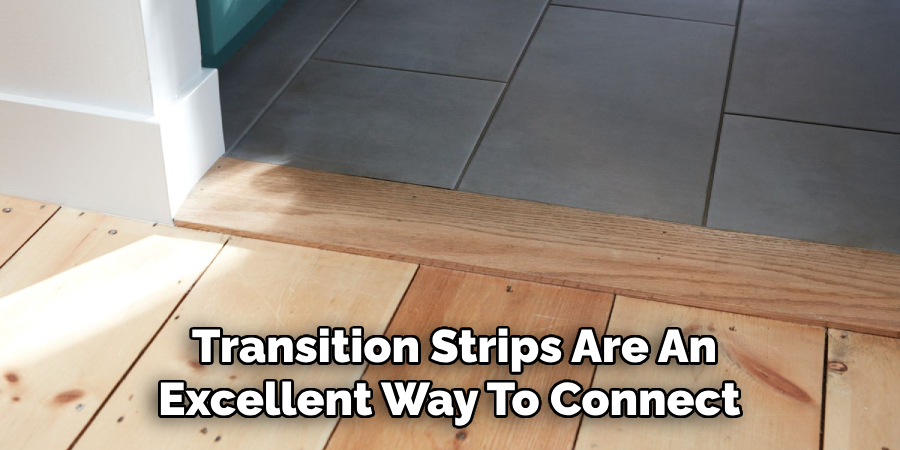
They come in a variety of materials and colors and can be a design element in their own right. If you’re transitioning between similar types of flooring (for example, hardwood to laminate), try to match the color and grain as closely as possible. Consider a neutral transition strip for contrasting flooring types to provide a clear yet harmonious boundary.
Step 7. Blend in Your Style:
While it’s important to consider practicality and function, your flooring should also reflect your style. Consider sleek materials like polished concrete or glossy tiles if you’re drawn to a contemporary look.
Try reclaimed wood or distressed laminate if a rustic aesthetic is more your style. Remember, your home is an extension of your personality, so don’t be afraid to inject your own tastes and preferences into your flooring choices.
Step 8. Consult with Experts:
While it’s possible to choose and match flooring on your own, consulting with a flooring expert or interior designer can be invaluable. They can provide professional advice and insights that you might have yet to consider, helping you make the best choices for your home and ensure a coherent and stylish look throughout. Be careful to consider your own personal style and preferences before blindly following trends or recommendations.
Step 9. Test Before You Commit:
Before you finalize your flooring choices, testing them out in your home can be helpful. Many companies provide samples you can take home and view in your spaces. This way, you can see how the flooring looks with your furniture, under lighting conditions, and against your wall colors.
Step 10. Maintenance and Durability:
Finally, when matching flooring in different rooms, consider the maintenance and durability of each type. Hardwood floors, while beautiful, require more upkeep than laminate or vinyl.
Tile floors in high traffic areas must be cleaned regularly to maintain their shine. Also, consider the life expectancy of your chosen flooring. If you plan on living in your home for many years, it may be worth investing in a more durable, high-quality flooring option.
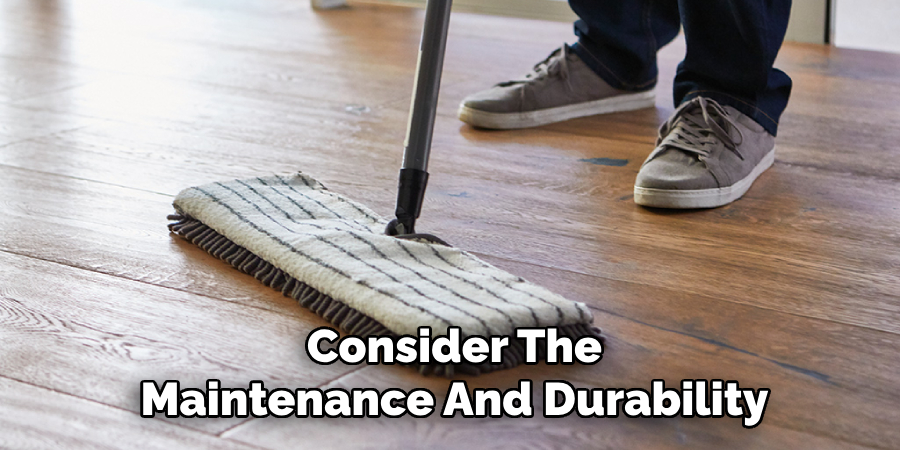
Following these steps and considering all factors, you can match flooring in different rooms to create a cohesive and visually appealing home. Remember, the goal is not to make every room look exactly the same but rather to create a sense of flow and harmony throughout your living space.
5 Additional Tips and Tricks
- Consider the Room Function: The function of a room can influence your flooring choice. For example, bathrooms and kitchen floors should be water-resistant, while bedrooms could benefit from a softer, warmer surface like carpet.
- Flow and Consistency: Aim for a cohesive and continuous look across rooms, especially in open-concept homes. This doesn’t mean all rooms should have identical flooring, but rather that the colors, patterns, and textures should complement each other.
- Keep It Simple: Don’t overcomplicate things by mixing too many flooring types. This can create a chaotic and busy feel in your home. Stick to two or three flooring options at most, and make sure they work well together.
- Think about the Future: Choose flooring that will stand the test of time in terms of durability and style. Remember that trends come and go, but the flooring will likely be in place for several years.
- Lighting and Color: Keep in mind that lighting conditions can affect the appearance of your floor. Observing flooring samples under different lighting conditions ensures you’ll be happy with your choice in all scenarios.
With these additional tips and tricks, you’ll be sure to find the perfect flooring for each room in your home.
5 Things You Should Avoid
- Avoiding Room Dimensions: Pay attention to the size and shape of your rooms when picking flooring. For example, using large, dark tiles in a small room can make it feel even smaller. Choose your flooring materials and colors wisely to enhance the perception of space.
- Neglecting Room Transitions: Be cautious about sudden flooring transitions between rooms. An abrupt change in color, texture, or material can be jarring and disrupt the visual flow of your home.
- Overlooking Maintenance Needs: Consider its maintenance needs before choosing a flooring type. Some materials may require more upkeep than others, so choose flooring that fits your lifestyle and cleaning habits.
- Ignoring Your Budget: Remember to consider your budget when choosing your flooring. While investing in good quality materials is important, ensure that your choice is financially sustainable and provides value for money.
- Overdoing Trends: Avoid getting too caught up in the latest flooring trends. While it’s nice to have a home that feels current, you also want your flooring to stand the test of time. Choose something that you won’t grow tired of in a few years.
By avoiding these common pitfalls, you can make more informed choices when matching flooring in different rooms.
5 Different Types of Flooring to Consider

- Hardwood: Hardwood is a classic and timeless flooring choice that can add warmth and character to any room.
- Laminate: Laminate mimics the look of hardwood but at a more affordable price point. It’s also more durable and easier to maintain.
- Carpet: Carpet adds comfort and softness underfoot, making it a popular choice for bedrooms and living rooms.
- Tile: Tile is water-resistant and easy to clean, making it an ideal option for bathrooms and kitchens. It’s also available in various colors and patterns, allowing you to get creative with design.
- Vinyl: Vinyl is a versatile flooring material that comes in many styles and can mimic the appearance of other materials, such as hardwood or tile.
With these different flooring options in mind, you can find the perfect fit for each room in your home. Remember to consider function, flow and consistency, simplicity, longevity, lighting and color when deciding.
Which Direction of Flooring Makes Room Look Bigger
Choosing the right direction for your flooring can significantly impact the size of a room. Here are some tips to help you achieve a spacious and open feel:
- Lengthwise: Installing flooring lengthwise can elongate a room, creating the illusion of more space. This is particularly useful in narrow rooms, such as hallways.
- Widthwise: Flooring installed widthwise can make a room feel wider and more open. This is ideal for square or small rooms.
- Diagonally: Placing flooring at a diagonal angle can add visual interest and create the illusion of a larger space.
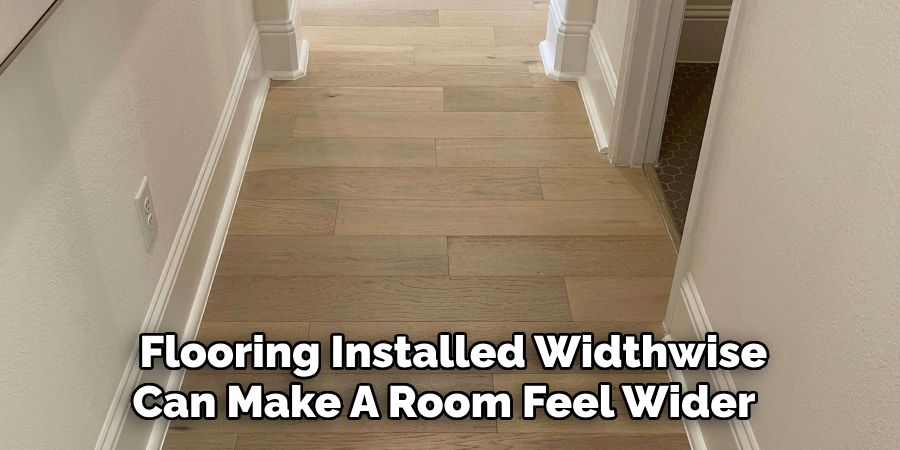
Ultimately, the direction you choose will depend on the room’s size and shape and your personal preferences. Experiment with different options to find what works best for each room in your home.
What Color Floor is Best for Small Rooms
When it comes to choosing the color of flooring for small rooms, there are a few things to consider:
- Light Colors: Lighter shades make a room feel more spacious and open. This is because they reflect natural light better, making the room appear brighter.
- Neutral Tones: Neutral colors like beige, gray, or light wood tones can also create a sense of openness while providing a timeless and versatile look.
- Avoid High Contrast: Dark flooring in contrast with light walls can make a room feel smaller. Instead, choose a more cohesive and balanced look by choosing flooring that complements the wall color.
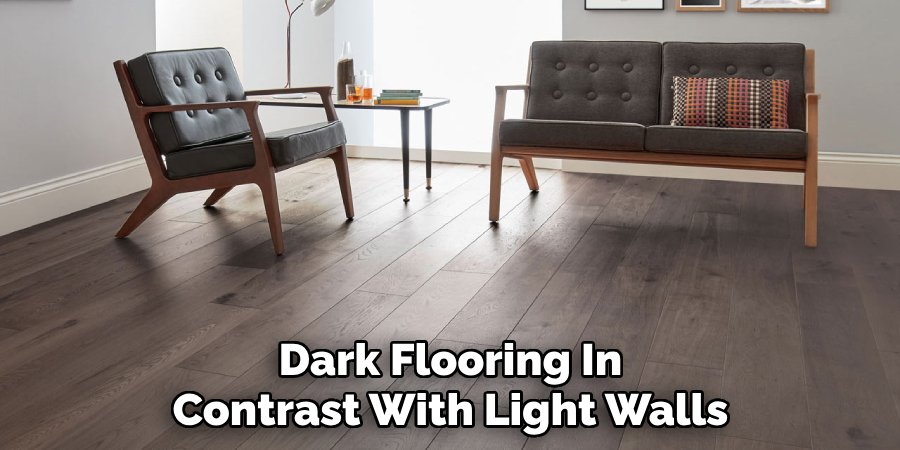
Ultimately, the best color for your small room will depend on your preferences and the overall design aesthetic you’re trying to achieve. Consider your room’s lighting, furniture, and decor when deciding. And remember, lighter colors tend to work best in creating the illusion of a larger space.
Conclusion
In conclusion, how to match flooring in different rooms is a creative and daunting task. Analyzing the color, style, and pattern of different flooring materials can help you create cohesion without making your entire decor too uniform.
Consider the size of each room, traffic flow within the home, and furniture placement when deciding what type of flooring works best in each area. If you’re overwhelmed with all of this information, finding professional help is perfectly okay. Talk to an interior designer or contractor who can give quality advice when selecting new flooring for your home.
Follow these tips to create a visually attractive space while choosing finishes that match seamlessly – don’t forget that practice makes perfect! Take action today by having a vision in mind and exploring the endless possibilities – good luck on your next project!
